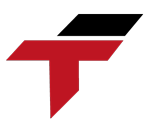What is a distributed control system? The distributed control system (DCS) is an industrial automation device whose main function is to monitor, manage, and control all activities. DCS has many outstanding features with many classifications and is widely applied in mining, minerals, food production and processing processes, power generation, and wastewater treatment plants…
What are the components of a distributed control system?
A basic Distributed Control System (DCS) is usually made up of the following components:
- Controller: A device that supports signal processing from field devices and generates control outputs, which can be a PLC or other specialized controllers.
- I/O module: A device that is connected to process signals between field devices and the controller.
- Human-machine interface (HMI): This part helps provide a more convenient interface for operators, easily monitoring and controlling the system through screens and input devices.
- Network: This part helps communicate and connect all components in the system, usually appearing in the form of wires or wireless.
- Field devices: include sensors and actuators used to measure and control the process, such as temperature, pressure sensors, and valves.
How many types of Distributed Control Systems are there?
Distributed control systems are commonly used by many businesses to monitor and manage process performance. These systems are divided into five basic types as follows:
Centralized Architecture
Almost all control functions are concentrated in a central controller, which communicates with field devices and subsystems over a communication network and is often used in small-scale systems.
Decentralized Architecture
This architecture distributes control functions among multiple controllers, each with a specific role. This type is often suitable for large systems where a single controller cannot handle the entire process.
Hybrid Architecture
This model is a combination of the two above methods. The central controller manages the overall process, while decentralized controllers are responsible for specific parts and this type of architecture is used in medium-scale systems where both centralized and decentralized control are needed.
Redundant Architecture
This architecture is especially important for applications that require high reliability. Multiple redundant controllers are deployed to provide redundancy, ensuring continuous availability of the system in case of failure, the redundant controller will automatically replace without interrupting the process.
Client/Server Architecture
In this model, most of the control functions are distributed evenly among multiple servers, each server takes on a separate task such as data collection/alarm management… usually suitable for large-scale, comprehensive.
What are the outstanding features of the Distributed Control System?
With such a variety of classifications, distributed control systems (DCS) bring many benefits to businesses thanks to outstanding features such as:
- System redundancy: DCS provides redundancy at all levels, ensuring stable and continuous system operation even when problems occur without interrupting the process.
- Powerful programming languages: DCS supports a variety of programming languages such as Ladder, Function Block, Sequence, etc., allowing customization of programs according to user requirements.
- Sophisticated HMI interface: Like SCADA, DCS also provides a very powerful human-machine interface (HMI), superior monitoring capabilities, and can control many different processes.
- Platform scalability: DCS provides flexible scalability, which can be upgraded from small to large systems by adding clients, servers, and I/O modules.
- Maximum system security: DCS provides robust levels of security, from engineer to operator, to ensure the safety of plant automation systems and processes.
What is the difference between PLC and DCS?
Programmable logic controllers (PLCs) and distributed control systems (DCSs) are modern automation technology devices that are trusted and used by many businesses in many different industrial fields, but each device will have its unique characteristics, specifically shown in the following table:
| Feature | PLC | DCS |
| Flexibility | Limitation by main processor | Superior scalability |
| Application model | From small to medium | From medium to large |
| Reliability | Less redundancy, and lower reliability than DCS. | Distributed and redundant at multiple levels (CPU, power, server, etc.). |
| Application | It is good for processes with many discrete signals and few analog signals. | Suitable for signal-critical processes and PID loops. |
| Stable | Less stable, and requires more effort and maintenance. | Very stable and highly optimized for long-term processes. |
| Monitoring Software | Not built-in, need to design and develop separate monitoring software. | Integrated software package, including full monitoring utilities. |
| Price | Lower cost | High cost |
How popular are Distributed Control Systems applications?
Thanks to their outstanding features, distributed control systems are trusted and widely used in many industrial and life fields such as:
- Processing industry
- Chemical industry
- Pharmaceutical, food, and beverage production industry…
- Water and wastewater treatment systems
- Power supply and production plants
Distributed control systems play an important role and contribute to many current manufacturing industries, showing that this is a very useful and trustworthy system that every manufacturing facility should own.
